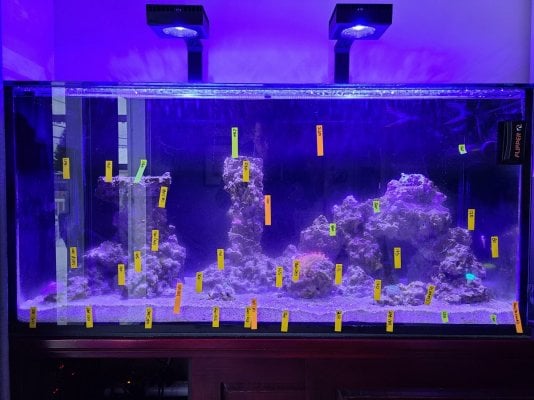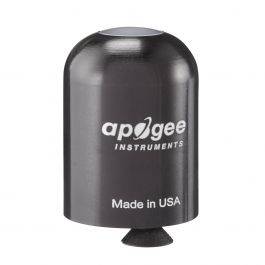The Photosynthetic Active Radiation (PAR) is a term used within the reef tank community when talking about lighting. Lighting is one of the most importing aspects of the reef aquarium, partly because many aquarium organisms require lighting to maintain or increase their growth and too high of a PAR can increase the growth of unwanted algae. Photosynthetic is the process by which these organisms transform light energy into food. Corals have tiny plants called zooxanthellae living within their tissue and so together they are called photosynthetic. The PAR is the measurement of light emission within the photosynthetic range of 400-700nm (nm is Nano-meter).

There are a few ways we can measure the lighting in the aquarium, such as lumens and lux meters but we are talking about PAR. Most, if not all, PAR meters are actually favorited within the reef community because they work well with LED lighting. I purchased an Apogee MQ-510 but I think any LED meter will be fine.

When I purchased this meter, there was no instruction on how to use the meter but the instructions can be viewed from Apogee’s website. You can search the internet, especially YouTube, and find different ways of testing…It is really easy. One item to note while using the meter, the PAR displayed will have a fluctuation range of reading.
For me, just starting out adding corals in my saltwater aquariums, my knowledge was not up to the challenge. My main problem was when purchasing corals from either an online store or local store, the descriptions stated the required lighting needs such as low, moderate, high, or extreme light. But what do these levels mean? Without a discussion on more specifics information regarding PAR, I want to talk about these few requirement levels.
In general, corals with low values are considered to less than 100 and high values are generally over 250/300, so that means anything in the middle is medium values.
Recap:
The lighting schedule can also play a huge role in the success of the reef aquarium regarding PAR levels. I tried to match the Sun with the respect to the rotation around the Earth. I set up my LED lighting on Apex Fusion to mirror Sun’s rise and fall. Here is what my schedule looks like.

The schedule has changed a few times since the beginning and I am sure it will change again.
Chasing PAR values can be time-consuming but can be more beneficial and observe these values based on individual needs and reactions. When purchasing a new coral and knowing the PAR before adding a coral into the new population can be a huge advantage. Something else to consider if no PAR meter is available, in the lower lights levels corals will lose their color and grow slower but if too bright, the corals will bleach and die faster.
There are a few ways we can measure the lighting in the aquarium, such as lumens and lux meters but we are talking about PAR. Most, if not all, PAR meters are actually favorited within the reef community because they work well with LED lighting. I purchased an Apogee MQ-510 but I think any LED meter will be fine.
When I purchased this meter, there was no instruction on how to use the meter but the instructions can be viewed from Apogee’s website. You can search the internet, especially YouTube, and find different ways of testing…It is really easy. One item to note while using the meter, the PAR displayed will have a fluctuation range of reading.
For me, just starting out adding corals in my saltwater aquariums, my knowledge was not up to the challenge. My main problem was when purchasing corals from either an online store or local store, the descriptions stated the required lighting needs such as low, moderate, high, or extreme light. But what do these levels mean? Without a discussion on more specifics information regarding PAR, I want to talk about these few requirement levels.
In general, corals with low values are considered to less than 100 and high values are generally over 250/300, so that means anything in the middle is medium values.
- Soft corals are low values
- LPS corals are medium values
- SPS corals are high values
| Species | Light Level | PAR Range |
| Low light LPS | Low | 50 - 100 |
| Soft Corals | Low – Moderate | 50 - 200 |
| LPS | Moderate | 100 - 200 |
| Derasa Clams, Anemones SPS | High | 200 - 300 |
| Montipora and other SPS | Intense | 300 - 400 |
| Crocea, Maxima Clams, Acro | Extreme | 400 – 500+ |
Recap:
- Low < 100
- Moderate 100 – 200
- High 200 – 300
- Intense 300 – 400
- Extreme > 400
The lighting schedule can also play a huge role in the success of the reef aquarium regarding PAR levels. I tried to match the Sun with the respect to the rotation around the Earth. I set up my LED lighting on Apex Fusion to mirror Sun’s rise and fall. Here is what my schedule looks like.
The schedule has changed a few times since the beginning and I am sure it will change again.
Chasing PAR values can be time-consuming but can be more beneficial and observe these values based on individual needs and reactions. When purchasing a new coral and knowing the PAR before adding a coral into the new population can be a huge advantage. Something else to consider if no PAR meter is available, in the lower lights levels corals will lose their color and grow slower but if too bright, the corals will bleach and die faster.
Last edited:















